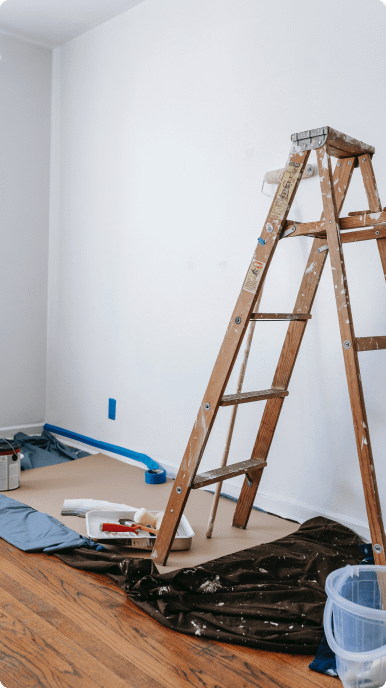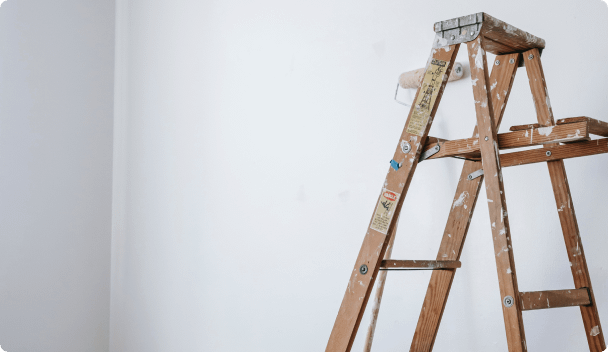Painting your home yourself can be a rewarding and budget-friendly project, transforming your space with a fresh, vibrant look. However, DIY house painting comes with challenges that can lead to costly errors if you’re not prepared. From uneven finishes to paint peeling prematurely, these mistakes can derail your efforts. This blog highlights the most common DIY painting pitfalls and provides practical tips to help you achieve a professional-quality result.
Why DIY House Painting Appeals to Homeowners
DIY painting is popular because it saves money on labor costs and allows you to personalize your home. With the right tools, preparation, and knowledge, you can achieve stunning results. However, skipping steps or rushing the process can lead to frustration. Below, we break down the top mistakes homeowners make and how to avoid them.
Common DIY House Painting Mistakes and Solutions
1. Skipping Proper Surface Preparation
Mistake: Failing to clean, sand, or prime surfaces before painting is one of the biggest errors. Dirt, grease, or old peeling paint can prevent new paint from adhering properly, leading to uneven coverage or premature flaking.
How to Avoid:
- Clean walls with a mild detergent and water to remove dust, grease, or grime. Rinse and let dry completely.
- Sand glossy or uneven surfaces to create a smooth base for paint to grip.
- Apply a high-quality primer, especially on bare wood, drywall, or stained surfaces, to ensure better adhesion and color consistency.
- Patch holes or cracks with spackling compound and sand smooth before priming.
2. Choosing the Wrong Paint or Finish
Mistake: Selecting the wrong type of paint or finish for the room or surface can lead to poor results. For example, using flat paint in a bathroom invites moisture damage, while glossy paint in a large room can highlight imperfections.
How to Avoid:
- Research paint types: Use latex (water-based) paints for most interior walls and ceilings, and oil-based paints for trim or high-wear areas.
- Match the finish to the room:
- Flat/Matte: Best for low-traffic areas like bedrooms; hides imperfections but is less durable.
- Eggshell/Satin: Ideal for living rooms or hallways; durable and easy to clean.
- Semi-Gloss/Gloss: Perfect for kitchens, bathrooms, or trim; resists moisture and stains.
- Test paint samples on a small area to ensure the color and finish look right under your home’s lighting.
3. Using Low Quality Tools or Materials
Mistake: Opting for cheap brushes, rollers, or paint can result in streaks, shedding bristles, or uneven coverage, making your hard work look amateurish.
How to Avoid:
- Invest in high-quality brushes (synthetic for latex paints, natural for oil-based) and rollers with the right nap length (short for smooth surfaces, longer for textured walls).
- Use painter’s tape for clean edges and drop cloths to protect floors and furniture.
- Choose reputable paint brands for better coverage and durability, even if they cost more upfront.
4. Ignoring Weather and Timing
Mistake: Painting in extreme temperatures or humidity—whether indoors or outdoors—can affect drying times and paint adhesion. For example, painting exteriors in high humidity can cause bubbling, while painting in cold weather may prevent proper curing.
How to Avoid:
- Check the paint can’s label for recommended temperature and humidity ranges (typically 50–85°F and below 70% humidity).
- For exterior painting, choose a dry day with mild temperatures and avoid direct sunlight, which can dry paint too quickly.
- Ensure good ventilation indoors to help paint dry evenly and reduce fumes. Use fans or open windows if needed.
5. Applying Paint Incorrectly
Mistake: Improper painting techniques, like overloading the brush or roller, painting too thickly, or not maintaining a wet edge, can lead to drips, streaks, or visible brush marks.
How to Avoid:
- Load your brush or roller with just enough paint to cover without dripping. Remove excess paint by tapping the brush or rolling it on the tray.
- Apply paint in thin, even coats, working in small sections (about 3×3 feet) to maintain a wet edge and avoid lap marks.
- Use a “W” or “M” pattern when rolling to distribute paint evenly, then fill in with vertical strokes.
- Allow each coat to dry fully (check the paint can for drying times) before applying the next.
6. Neglecting to Protect Surrounding Areas
Mistake: Failing to cover furniture, floors, or trim can result in paint splatters or smudges, creating extra cleanup work or permanent damage.
How to Avoid:
- Move furniture out of the room or cover it with plastic sheeting.
- Use drop cloths (canvas for floors, plastic for larger areas) to protect surfaces.
- Apply painter’s tape carefully along trim, windows, and edges for crisp lines. Press it down firmly and remove it while the paint is still slightly wet to avoid peeling.
7. Rushing the Project
Mistake: Hurrying through preparation, painting, or cleanup can lead to sloppy results, missed spots, or damage to surfaces. DIY painting requires patience for professional-looking outcomes.
How to Avoid:
- Plan your project timeline, allowing extra time for prep and drying between coats. A single room may take a weekend or more.
- Work in manageable sections to maintain focus and avoid fatigue.
- Clean tools thoroughly after each session to prevent dried paint from ruining brushes or rollers.
8. Overlooking Safety Precautions
Mistake: Ignoring safety measures, such as working on unstable ladders or inhaling paint fumes, can lead to accidents or health issues.
How to Avoid:
- Use a sturdy ladder and ensure it’s on level ground. Have someone spot you if working at heights.
- Wear protective gear, like gloves, safety glasses, and a mask, especially when sanding or using oil-based paints.
- Work in a well-ventilated area and take breaks to avoid prolonged exposure to fumes.
Bonus Tips for DIY Painting Success
- Start Small: If you’re new to painting, begin with a small project, like an accent wall or a bathroom, to build confidence.
- Watch Tutorials: Online videos can teach proper techniques, like cutting in edges or rolling walls evenly.
- Test Your Skills: Practice on a piece of drywall or cardboard to perfect your brush or roller technique before tackling the real project.
- Keep Cleanup Simple: Have a bucket of warm, soapy water (for latex paint) or mineral spirits (for oil-based paint) ready for quick spill cleanup.
Conclusion
DIY house painting is an empowering way to refresh your home, but avoiding common mistakes is key to achieving a flawless finish. By preparing surfaces properly, choosing the right materials, using correct techniques, and prioritizing safety, you can transform your space with confidence. Take your time, plan ahead, and enjoy the process of making your home uniquely yours.
Ready to start your DIY painting project? Grab your supplies, follow these tips, and paint your way to a beautiful home!


